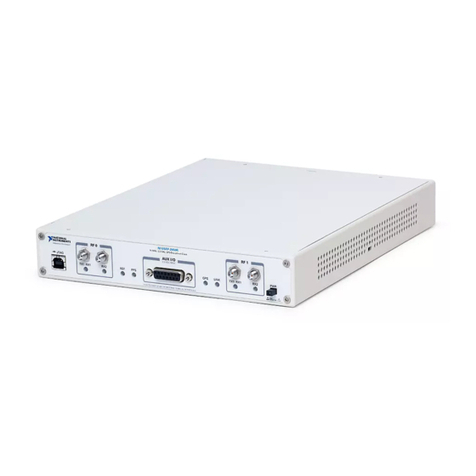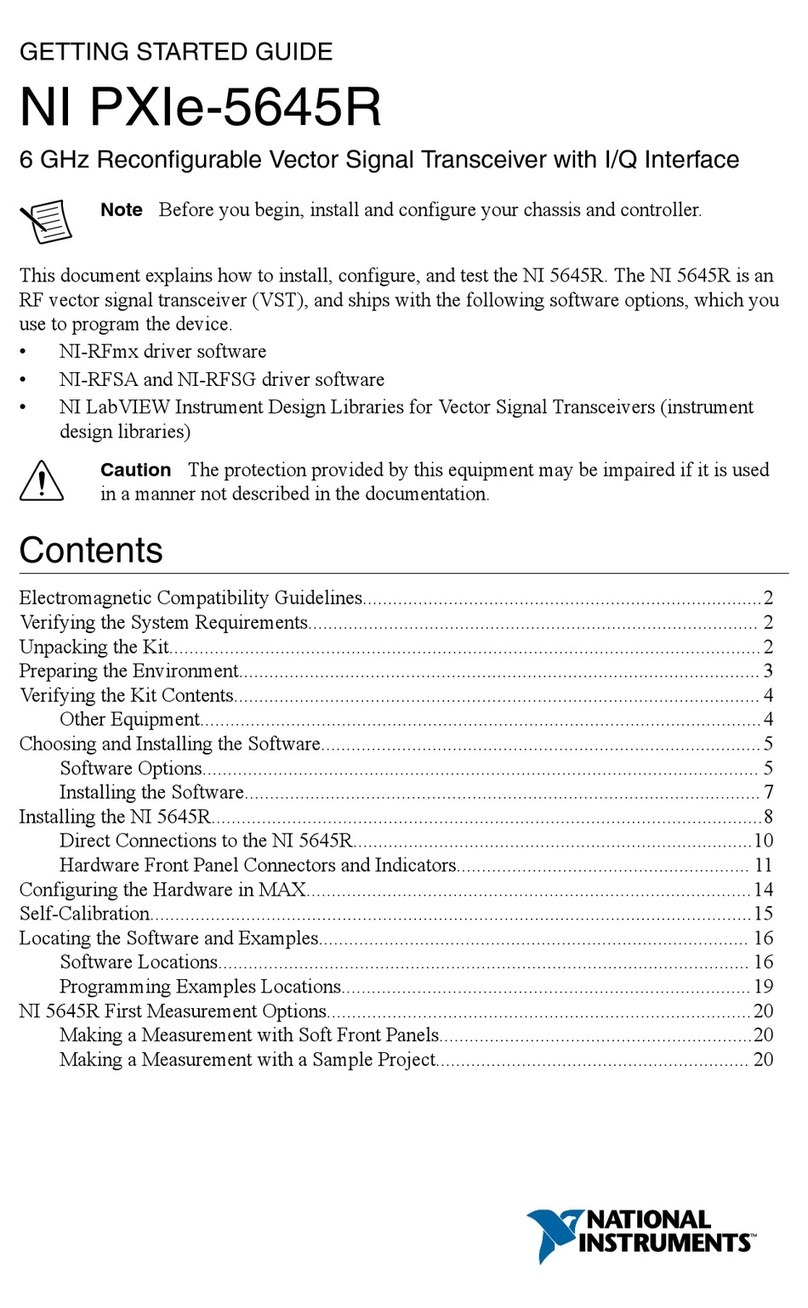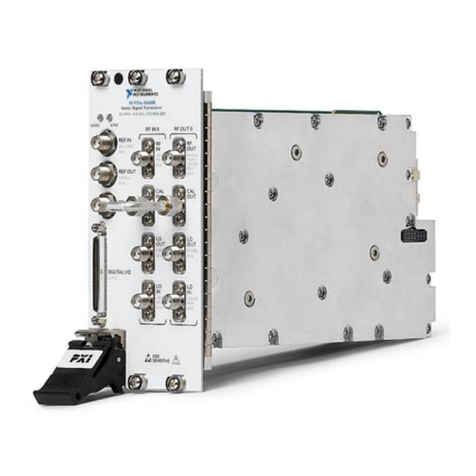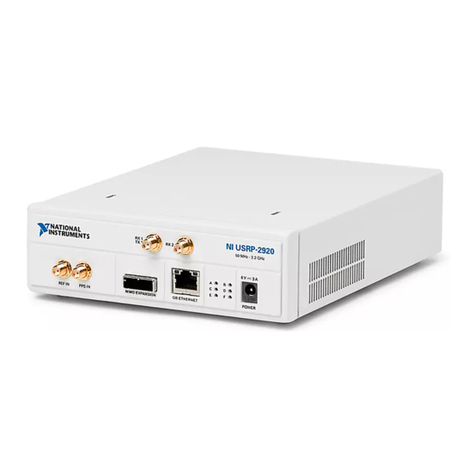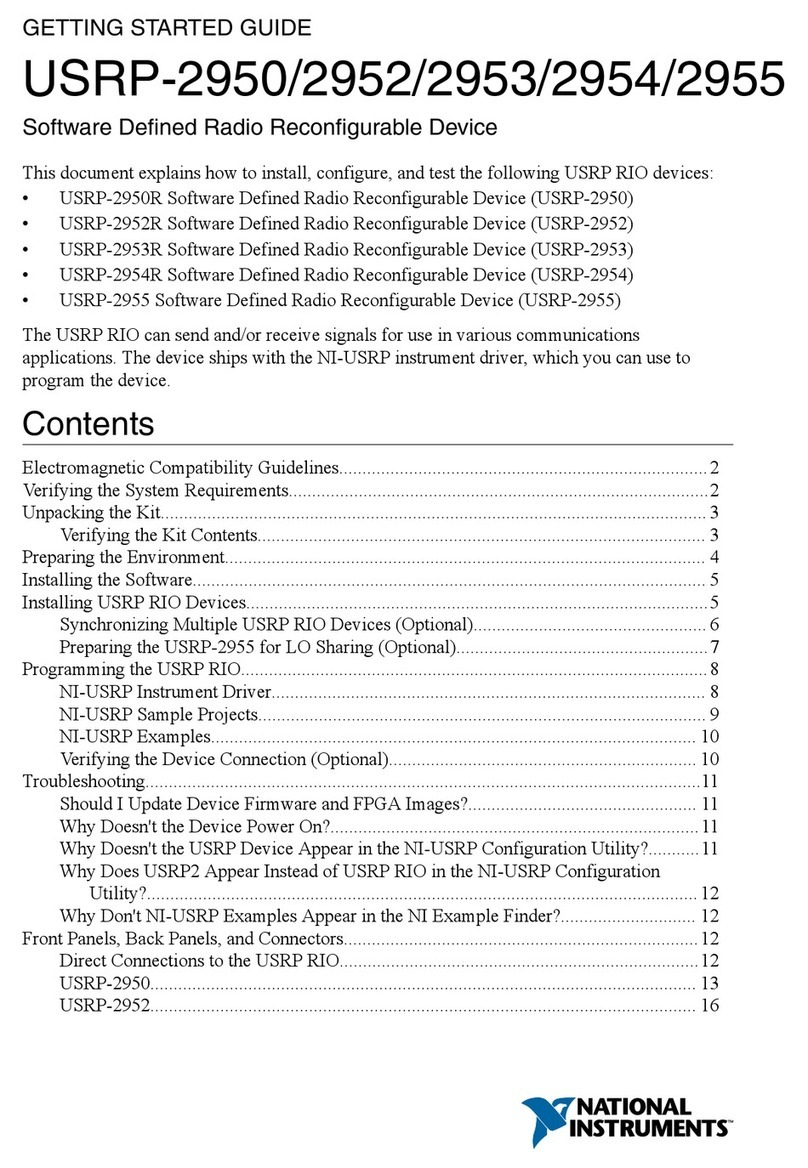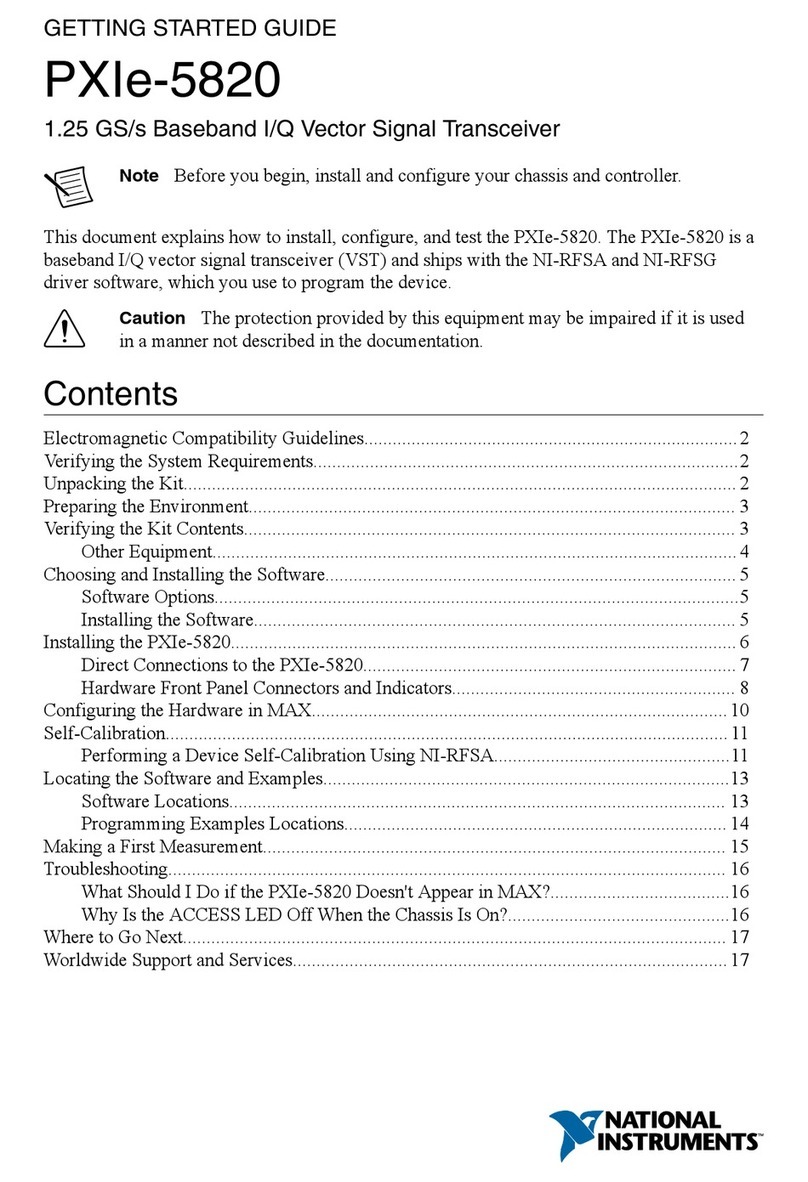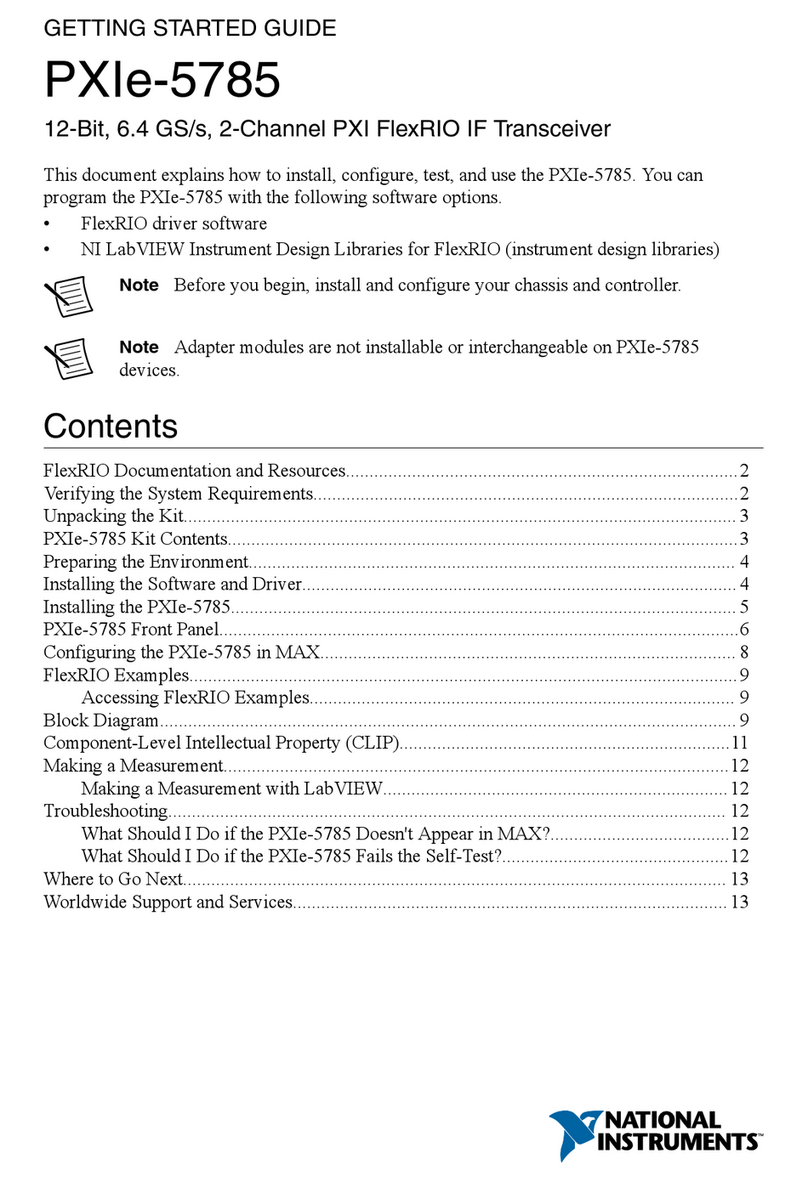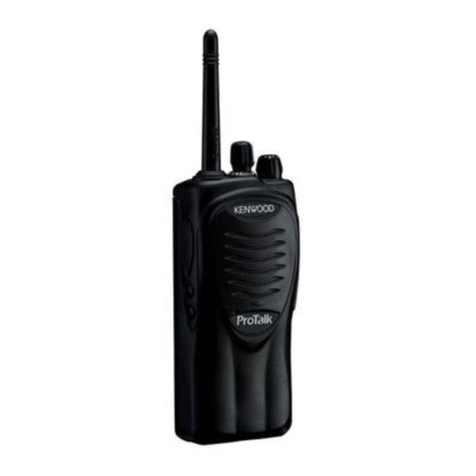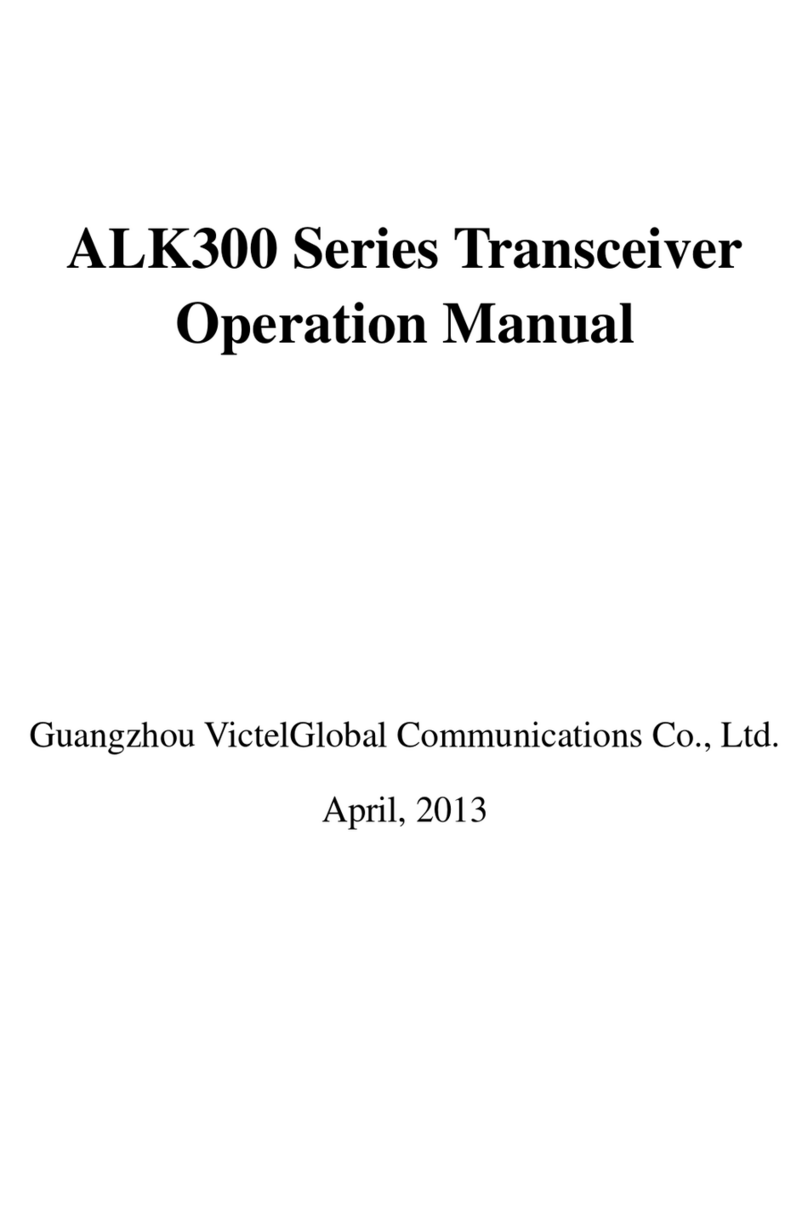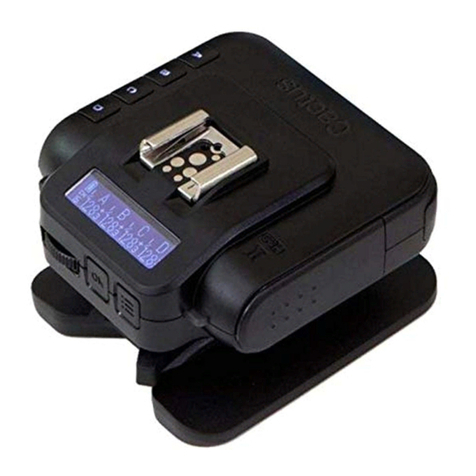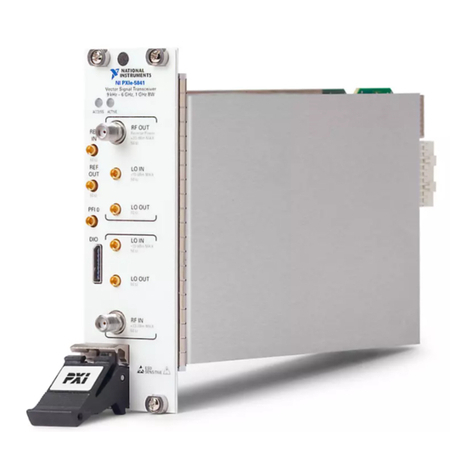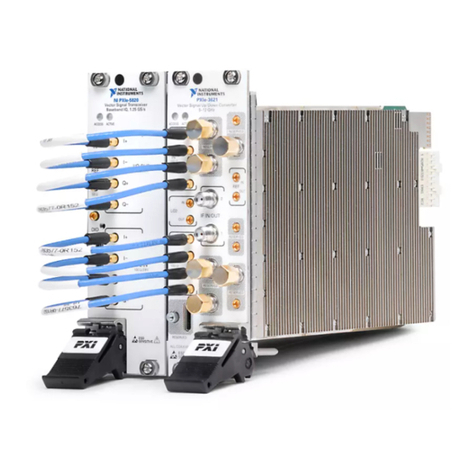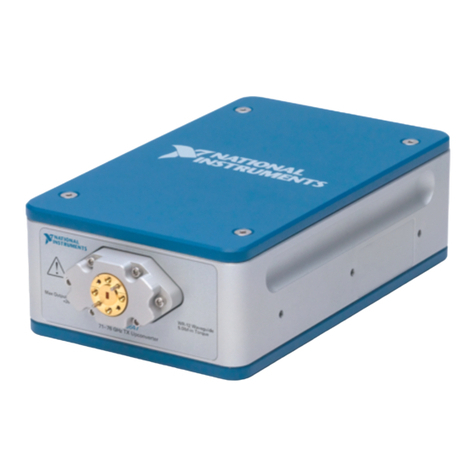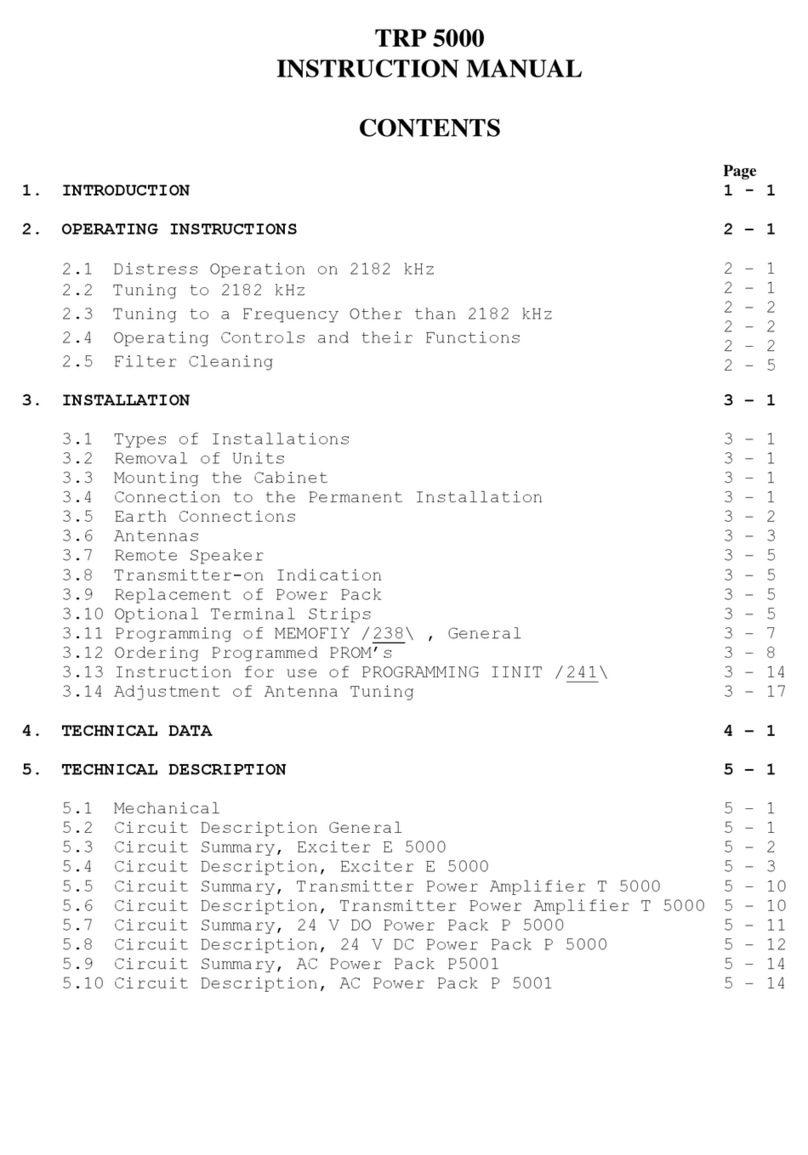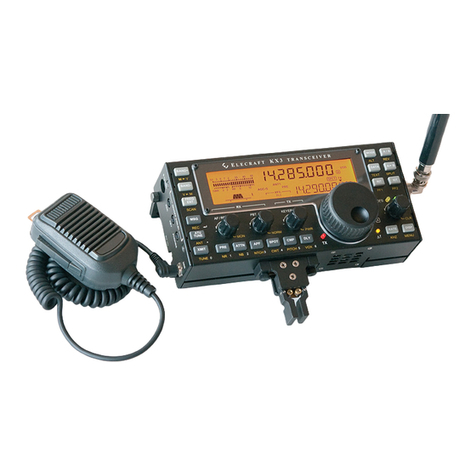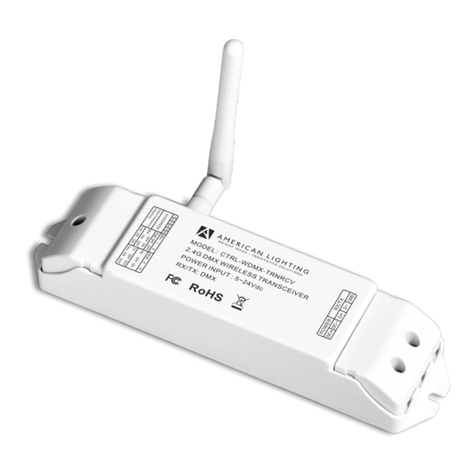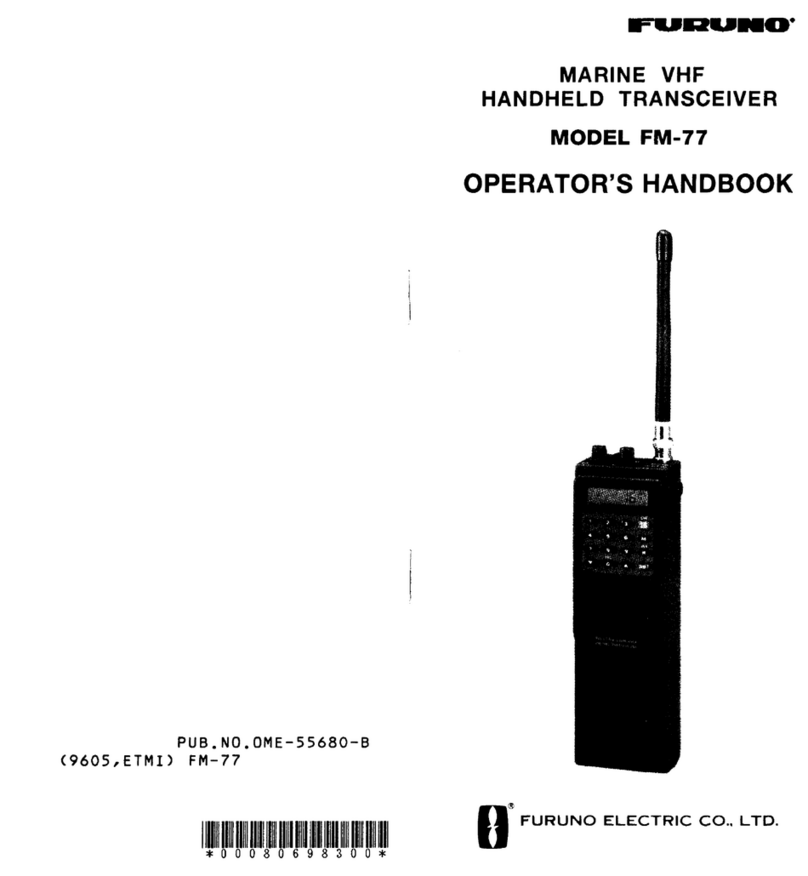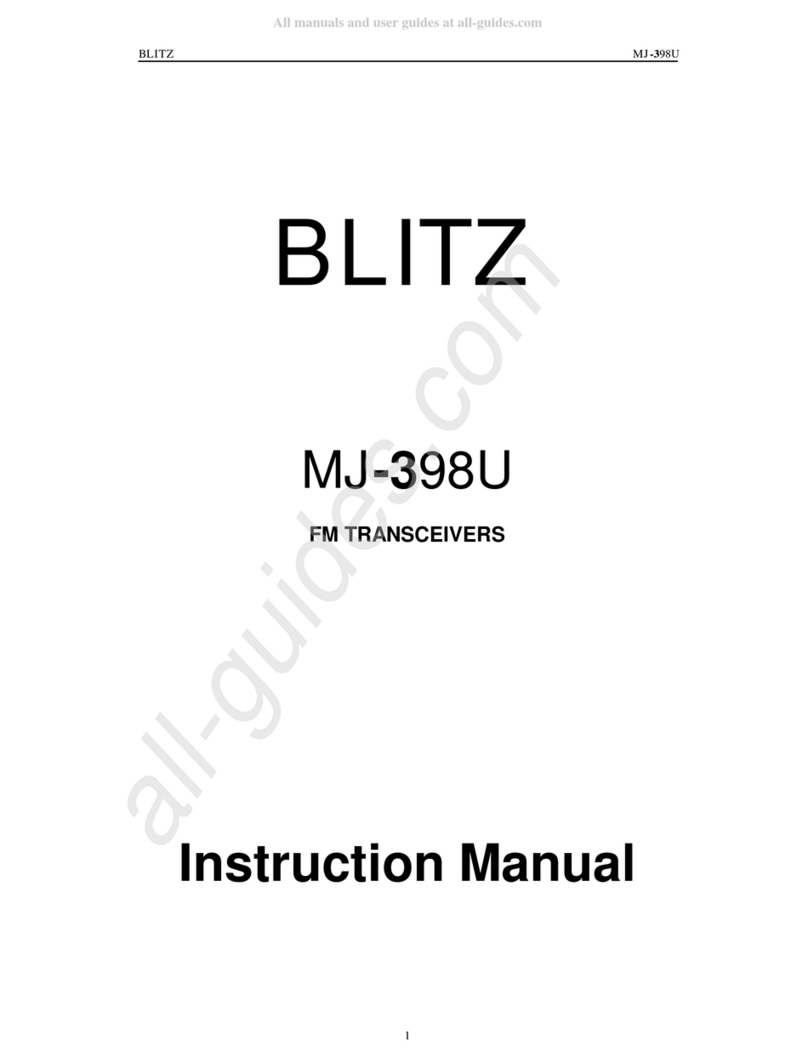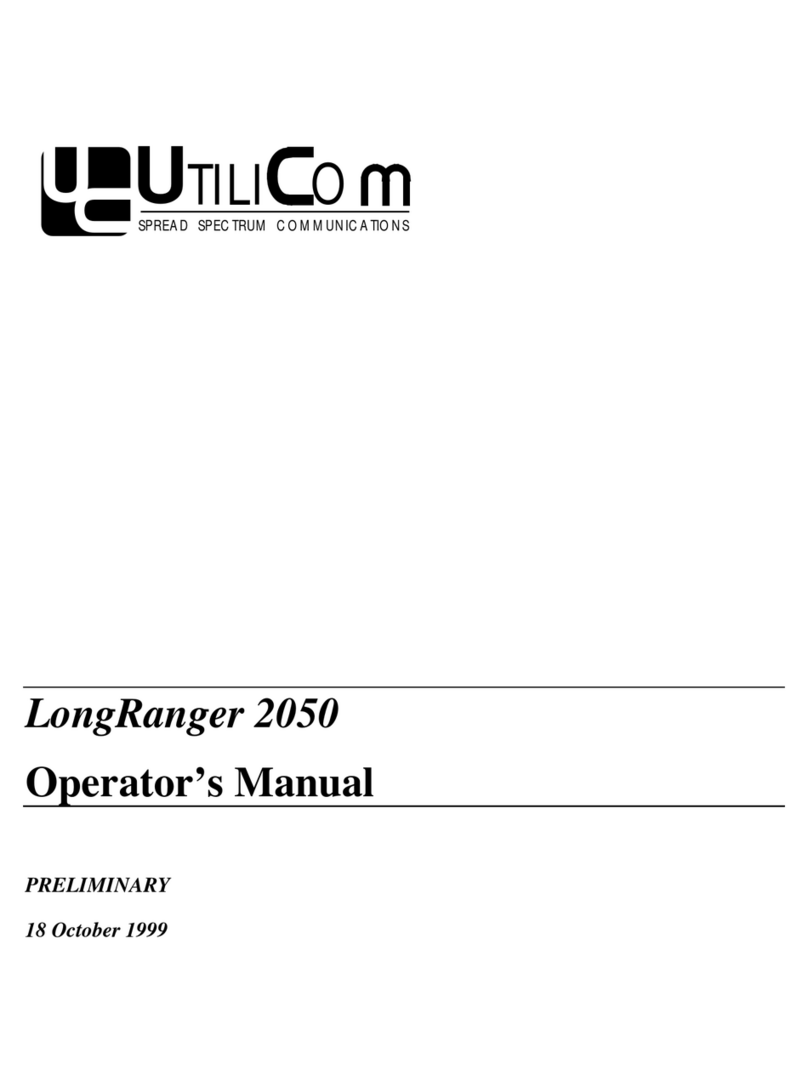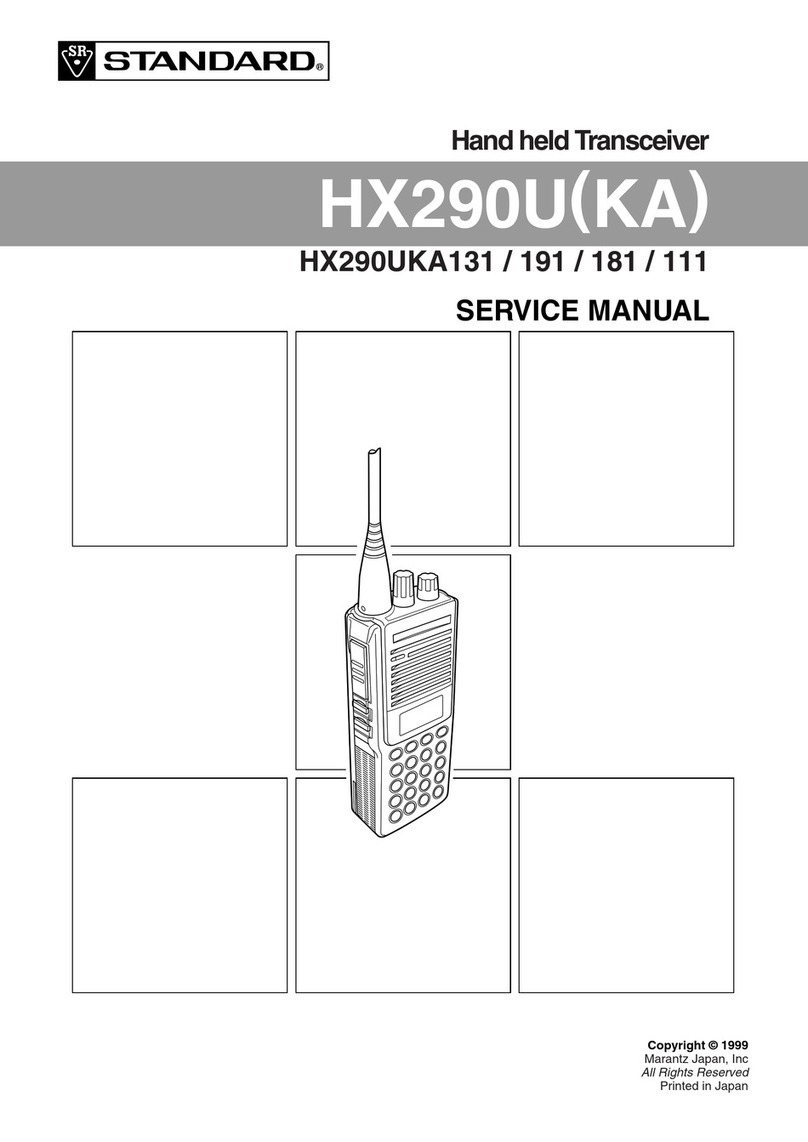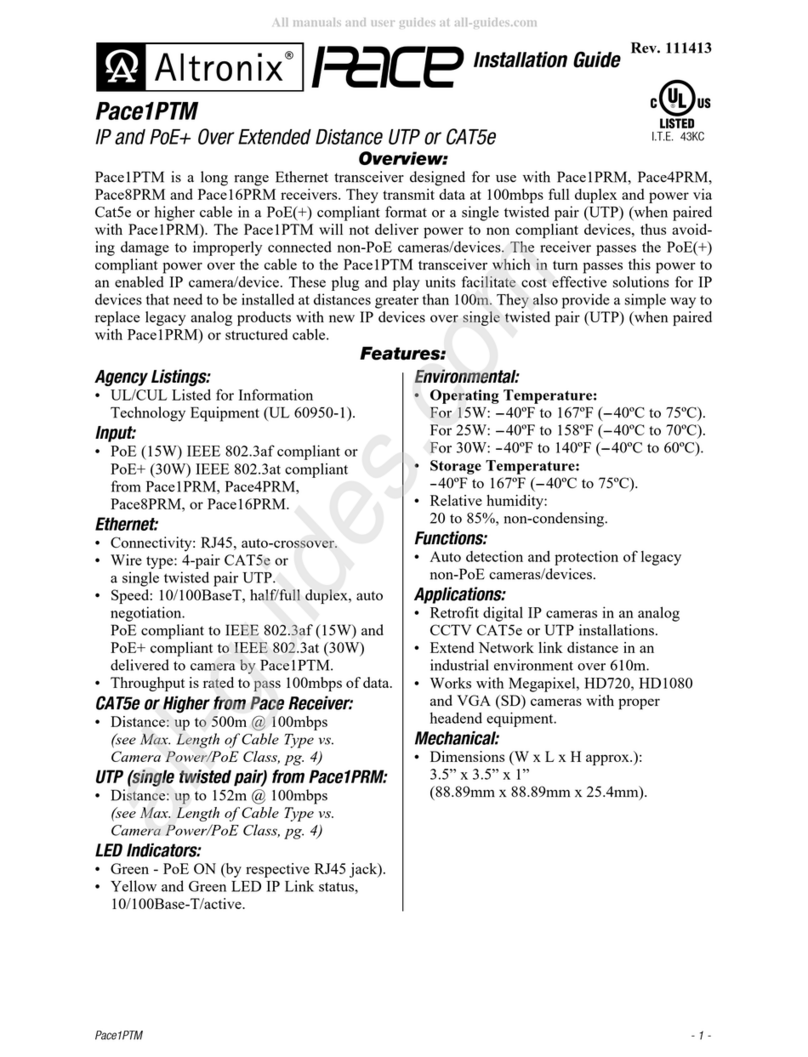
3. On the host computer, open the niUSRP EX Tx Continuous Async example VI and run it.
If the device is transmitting signals, the IQ graph displays I and Q waveforms.
4. Open the niUSRP EX Rx Continuous Async example VI and run it.
If the device is receiving signals, the IQ graph displays I and Q waveforms.
Troubleshooting
If an issue persists after you complete a troubleshooting procedure, contact NI technical
support or visit ni.com/support.
Why Doesn't the USRP Device Appear in MAX?
MAX does not support USRP-2900/2901 devices. Use the NI-USRP Configuration Utility
instead. Open the NI-USRP Configuration Utility from the Start menu at Start»All
Programs»National Instruments»NI-USRP»NI-USRP Configuration Utility.
Why Doesn't the USRP Device Appear in the NI-USRP
Configuration Utility?
1. Verify that the latest NI-USRP drivers are installed by running NI Update Service,
available from the Start menu at Start»All Programs»National Instruments»NI
Update Service.
2. Check the LED status to ensure the device is powered correctly. If the LED is blue, the
device is powered correctly using USB. If the LED is orange, the device is powered
correctly using external power.
3. Connect the device to a different USB port of the host computer, if one is available.
4. Ensure that the latest drivers are installed for your USB controller.
Front Panels and Connectors
Direct Connections to the USRP-2900/2901
The USRP-2900/2901 is an RF instrument that is sensitive to ESD and transients. Ensure you
take the following precautions when making direct connections to the USRP-2900/2901 to
avoid damaging the device.
Caution Apply external signals only while the USRP-2900/2901 is powered on.
Applying external signals while the device is powered off may cause damage.
• Ensure you are properly grounded when manipulating cables or antennas connected to the
USRP-2900/2901 TX1 RX 1 or RX2 connector.
• If you are using nonisolated devices, such as a nonisolated RF antenna, ensure the devices
are maintained in a static-free environment.
• If you are using an active device, such as a preamplifier or switch routed to the
USRP-2900/2901 TX1 RX 1 or RX2 connector, ensure that the device cannot generate
signal transients greater than the RF and DC specifications of the USRP-2900/2901 TX1
RX 1 or RX2 connector.
USRP-2900/2901 Getting Started Guide | © National Instruments | 9
